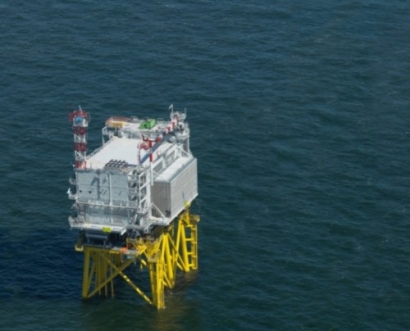
Certification issued by DNV GL marked the completion of the Borssele Alpha project meaning the offshore grid connection complies fully with the conditions set out in the Dutch government’s Offshore Wind Energy Development Framework.
The Borssele I and II wind farms will have a capacity of around 700 MW. This corresponds to electricity generation for approximately one million households. The power will be connected through TenneT’s offshore connection Borssele Alpha to the onshore high voltage substation near Borssele for further transport in the high-voltage grid. For this purpose, a new substation has been built next to the existing 380 kV Borssele high voltage substation.
Marco Kuijpers, Senior Manager of TenneT’s offshore projects in the Netherlands, explained, ‘It is a fantastic achievement that this first major connection system for North Sea wind energy has been completed to schedule and within budget. The approach that we use in the Netherlands, which was developed in association with the Ministry of Economic Affairs and Climate, is now bearing fruit. The integrated approach that was implemented on behalf of the Dutch government under the responsibility of the Ministry of Economic Affairs, the clear decisions concerning offshore wind energy locations, the innovations being adopted and TenneT’s standardized transmission systems are perfectly suited not only to the offshore wind program up to the end of 2023, but also to the projects that have been planned to the end of 2030. “
According to the energy agreement, by the end of 2023 TenneT will have constructed 3,500 MW of offshore grid connections for offshore wind farms. The next connection after Borssele Alpha is Borssele Beta. Like Borssele Alpha, this connection system will have a capacity of 700 MW and will be completed in 2020, serving the Borssele III and Borssele IV wind farms, which are being developed by the Blauwwind consortium. After this, it will be the ‘Hollandse Kust (zuid)’ Alpha and Beta, followed by ‘Hollandse Kust (noord)’.
The Borssele Alpha transformer platform also includes a measuring station with nautical radars, meteorological systems (for wind, precipitation, clouds and temperature) and ecological monitoring systems for birds and bats.

